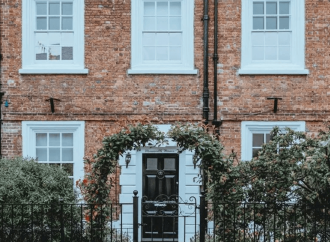Right to Buy Extension for Housing Association Tenants - Part 2
No doubt you’ve been eagerly anticipating the sequel to our first blog: ‘Right to Buy Extension for Housing Association Tenants', in which we explored some of the latest adaptations and schemes designed to give those living in social housing more opportunity.
In part 2 we will examine the next steps, and hurdles you may face, after acquiring a right to buy property:
Right to Buy Mortgages
Once you’ve agreed a price and decided to buy, the responsibility of organising a right to buy mortgage falls solely upon you. Regardless of the fact you may’ve gone down one of the right to buy scheme routes, you will go through the same procedure of applying for a mortgage as any other person who has just bought a property. If you’re unfamiliar with the mortgage process, you may be in for an awakening. There’s a lot to absorb and it can be quite complex. We’d advise seeking expert advice from a mortgage broker like MortgageKey, if you're feeling faint.
Right to Buy Financials
Prepare yourself for relentless financial assessment and scrutiny from your lender. Understandably, they have to ensure that lending you a large amount of money is not at a risk to themselves. It’s also worth noting that you will be subject to additional costs and responsibilities which you may have not have had as a tenant. Repairs, maintenance and insurances are now something you will have to take care of and budget for. Add to that budget your general living costs, when calculating what you think you can afford, in terms of monthly mortgage payments. On top of that, you’ll need some extra cash to cover the costs of stamp duty, survey and solicitor’s fees.
Right to Buy - Selling My Property
It’s not going to be as simple as buying your property at a discount and then flipping it for profit. Naturally, if something occurs, or your circumstances change, you can sell your property, but it comes with regulations. If you decide to sell your right to buy property within ten years of buying it, you must offer it to a landlord in the area. You will have signed this agreement in your original paperwork. If said landlord wishes to invest, the property should be sold at the full market price upon which you agree. If an agreement can’t be reached you can get an independent valuation to set the price. You may wish to sell the property within five years but, again, this has parameters. You’d have to pay back some, if not all of the discount you originally received. The amount you pay back will also depend on the current value of your property.
Right to Acquire
An alternative option to right to buy is the right to acquire. As long as you’ve had a public sector landlord for at least three years and have lived in a housing association property built after 1997, you are eligible. You may not be entitled to as much discount, by opting for this route, but you can still benefit from substantial savings. Similar rules apply if you choose to sell the property within five or ten years.
Your Right to Buy
Hopefully, you’ve discovered some new options and possibilities from this guide to right to buy mortgages. If you’d like any further support or advice, feel free to get in touch with one of our advisors.
Latest Guides
 House Purchase
House Purchase
8 Iconic Christmas Movie Homes – How much they cost today & their estimated mortgage rates
For millions... Read More
 Buy to Let
Buy to Let
The 5 most FAQ’s about Tax on a Buy to Let Property
Unsurprisingly, when tackling the topic of tax, everybody wants to know how to either pay less... Read More
 Remortgaging
Remortgaging
What Information Do I Need To Remortgage?
At MortgageKey, our mortgage advisors are expertly placed to assess your circumstances and... Read More
 Let to Buy
Let to Buy
The Benefits of a Let to Buy Mortgage
Moving home but don’t want to sell? A Let to Buy Mortgage could be the option for... Read More
Think Carefully Before Securing Debts Against Your Property.
Your Home Maybe Repossessed If You Do Not Keep Up With Your Repayments.

Ready to talk? Speak to an expert today: 01482 306666

